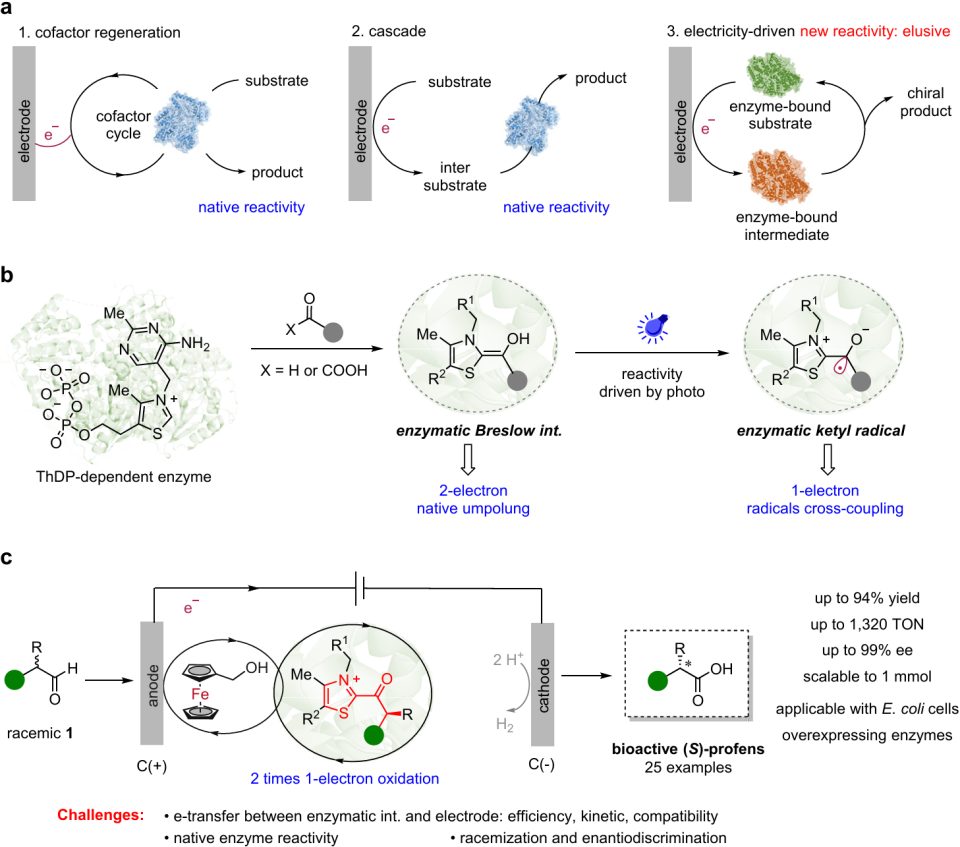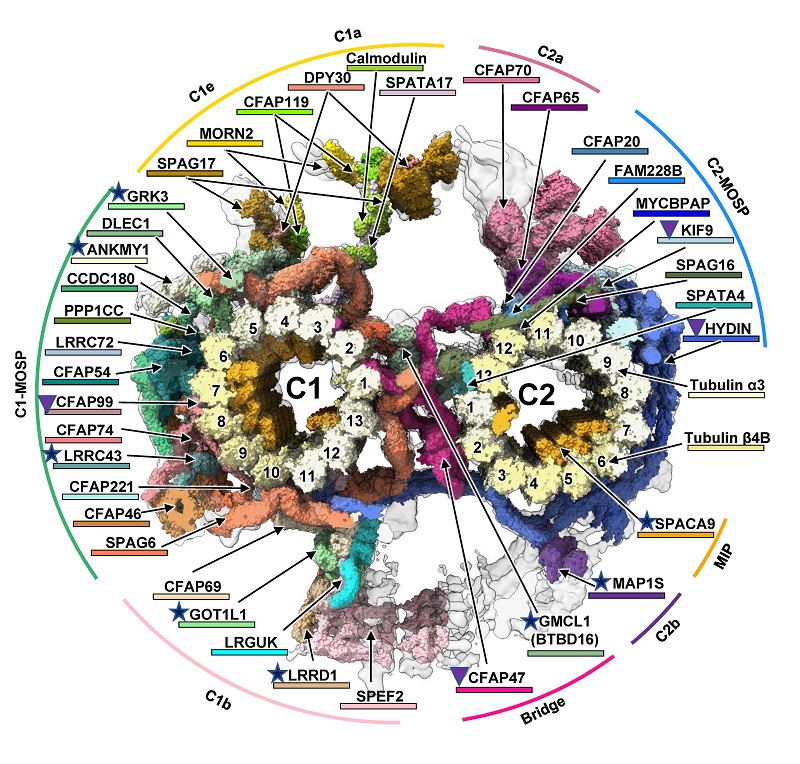2025-06-10 中国科学院(CAS)
 Non-natural enzyme reactivity driven by electricity (Image by LI Jingxin)
Non-natural enzyme reactivity driven by electricity (Image by LI Jingxin)
<関連情報>
- https://english.cas.cn/newsroom/research_news/phys/202506/t20250611_1045404.shtml
- https://www.nature.com/articles/s41586-025-09178-6
電気駆動酵素による動的速度論的酸化 Electricity-driven enzymatic dynamic kinetic oxidation
Beibei Zhao,Yuanyuan Xu,Qin Zhu,Aokun Liu,Xichao Peng,Tianying Zhang,Lu Yu,Yan Zhang & Xiaoqiang Huang
Nature Published:28 May 2025
DOI:https://doi.org/10.1038/s41586-025-09178-6
Abstract
Electrochemistry is undergoing a resurgence in synthetic chemistry and has compelling advantages1. Repurposing natural enzymes through synthetic chemical strategies holds promise for exploring new chemical space2,3,4,5,6. Elegant strategies, including directed evolution7,8,9,10, artificial enzymes11 and photoenzymatic catalysis12,13, have demonstrated their capacities for expanding the applications of enzymes in both academia and industry. However, the integration of electrochemistry with enzymes has primarily been limited to replicating previously established enzyme functions14,15,16. Key challenges in achieving new enzyme reactivity with electricity include compatibility issues and difficulties in heterogeneous electron transfer. Here we report the reshaping of thiamine-dependent enzymes with ferrocene-mediated electrocatalysis to unlock an unnatural dynamic kinetic oxidation of α-branched aldehydes. This robust electroenzymatic approach yields various bioactive (S)-profens with up to 99% enantiomeric excess; it is applicable with whole cells overexpressing the enzyme and using down to 0.05 mol% enzyme loadings. Mechanistic investigations show multiple functions of the electroenzyme in precise substrate discrimination, accelerating racemization and facilitating kinetically matched electron transfer events.


